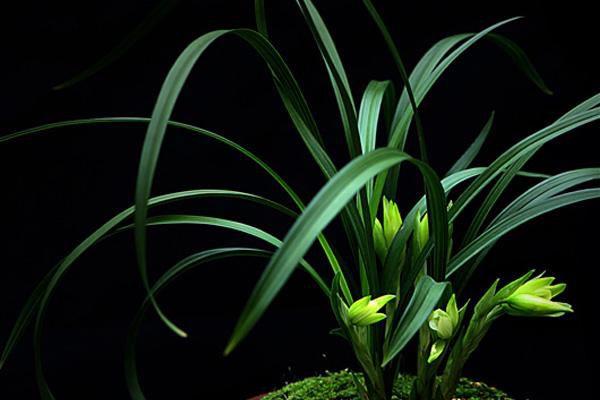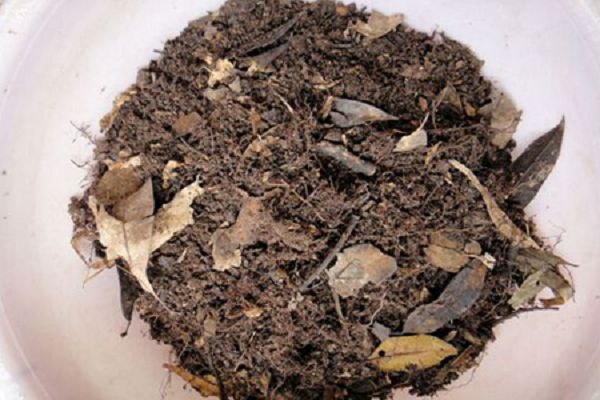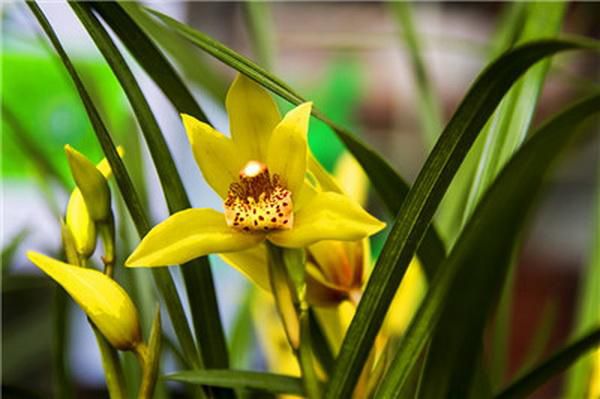Maintenance methods of Orchid in Autumn

Autumn is another golden season for orchid cultivation. Orchid farmers should grasp the climatic characteristics of autumn and focus on adjusting light, changing pots and plants, fertilizer and water supply, pest control and so on. Now let's go and study.
1. Increase the light and increase the temperature difference to promote buds and seedlings.
The autumn sun can enhance the orchid's ability to resist diseases, insects and cold. Therefore, in autumn, we should reduce the shade as much as possible, let the orchid receive more sunlight, open the orchid room window at night, let it be fully ventilated, and increase the temperature difference between day and night. Orchid farmers all know that increasing the illumination of orchids and increasing the temperature difference in autumn is a shortcut to promote buds and seedlings. This is also illustrated by the fact that orchids bloom in places with more light in nature.
2. Watering and fertilizing.
In the autumn of long drought and no rain, we should pay more attention to watering and moisturizing. If the humidity is too low, we can spray to keep the environment moist and prevent the orchid leaves from withering. After growing in summer, most of the nutrients in the basin have been depleted, so more attention should be paid to supplementary fertilizers in autumn. The method is to topdressing organic fertilizer, once every 10 days, and spraying nitrogen fertilizer on the leaf surface, also about once every 10 days, the two can be carried out alternately. In addition, while applying organic fertilizer to the roots, some phosphorus and potassium fertilizers can be added appropriately. Phosphate fertilizer has the function of promoting the sturdiness of orchid plants and flower bud differentiation. For example, if there is a lack of phosphorus in the plant material, it is generally difficult for plants to blossom. Usually, 0.2% to 0.3% potassium dihydrogen phosphate solution can be used for foliar spraying, once every 5 to 7 days, for 2 to 3 times. Fertilization time should be selected in the orchid basin after the plant is slightly dry, the temperature is lower than 30 ℃ in the sunny evening, the next morning should be timely watering, in order to keep the basin soil moist without stains, must not be too dry.
3. Pruning and finishing.
For the orchid that blossoms in summer and autumn, the flower branches should be cut off in time after flowering and nutrients should be replenished to the Zhuang orchid plant. For orchids with luxuriant growth and not yet time to change pots, orchid leaves should be arranged in time. If the plants are too dense, some weak and diseased plants can be properly removed, diseased leaves, withered branches and scorched tail leaves can be cut off, so as to promote the balanced and robust growth of orchid plants and maintain their ornamental quality.
4. Ramet to change the basin.
The orchid is restricted by the flowerpot, and the vigorous root group is difficult to stretch and arch to the basin, which brings difficulties to watering and fertilization. there are too many plants in the pot, which is not only vulnerable to diseases and insect pests, but also very disadvantageous to the growth of orchid plants. in the face of this kind of situation, the pot can be changed. Chardonnay and Qiulan are the right time to change pots from late October to mid-November. When changing the basin, turn out the mother plant, gently remove the mud, separate according to the natural plant, trim the abortive roots and leaves, and be careful not to touch the leaf buds and fleshy roots. Wash the root with clean water, put it in a cool place, and put it on the basin when the root color is white and dry.
5. Disease and pest control.
The autumn climate is suitable for the occurrence of all kinds of diseases and insect pests. Red spiders, shell insects, grubs and other pests are several main pests that harm orchids. A small amount of shell insects can be brushed away with a brush, and when the amount is large, it can be sprayed with 40% dimethoate 800-1000 times. If the red spider is not controlled in time, it can make the orchid leaves green and scorched, which can be removed by spraying the pollution-free pesticide Luying 500-600 times. The grubs that sneak into the flowerpot will eat the fleshy roots of orchids and wilt the plants if they are seriously harmed. 1000 times phoxim can be used for root irrigation control, 150ml to 200ml each time. In addition, autumn is also the season with high incidence of orchid soft rot, stem rot and black spot. Agricultural streptomycin, chlorothalonil, methyl topiramate and other fungicides can be sprayed alternately, not only to spray orchid leaves, but also to spray liquid to the surrounding areas.
Related
- Is the orchid suitable for indoor use? Is it good for the body?
- How to prevent the empty root of orchids?
- What to do after the crab claw orchid is withered?
- Why are the leaves of orchids always yellow? Fertilizing and watering.
- Can the root of the gentleman orchid be saved if it is rotten?
- Diagnosis and treatment of cotton-blowing beetle insects in Cymbidium
- There is a way for a gentleman's orchid to rot.
- What is the most suitable temperature and humidity for the orchid?
- How to raise a gentleman's orchid? Cultivation techniques of Cymbidium
- How to prepare the nutritive soil for the cultivation of Cymbidium



